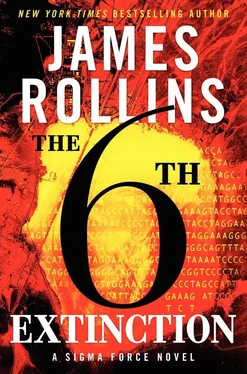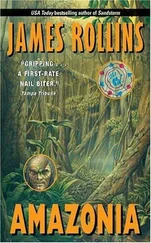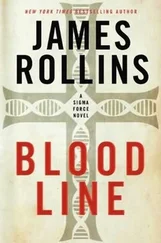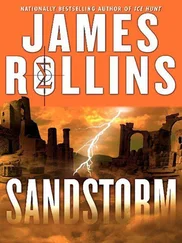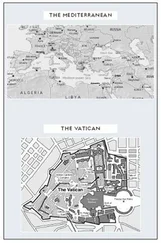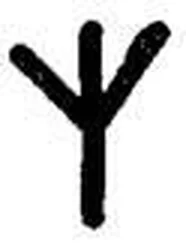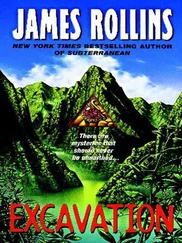It was a fossilized sculpture of an ancient world.
Overhead, strange luminous creatures floated through those branches, possibly held aloft on some internal reservoir of hydrogen gas or helium. They looked like Japanese lanterns adrift on a breeze.
The group entered the vast space, necks craning at the sheer size. Jason had read about the discovery of a trench under the Western Antarctic ice, twice as deep as the Grand Canyon. This space could be its cavernous equivalent.
“Over this way,” Harrington urged.
The professor led them to the right, toward a wide shallow tributary of the delta. He splashed through the ankle-deep flow. Jason followed, but he had to fight the urge to tiptoe through the stream, still wary of the water. He watched for any new threat, while taking cues from Stella, who swept her IR beam ahead of her. He noted a double row of broken pillars, each as thick as Kowalski’s thigh, running alongside their path. At first he thought they were natural formations, but the rows were too uniform. Closer inspection revealed they were actually the stubs of wooden pylons, anchored by mold-blackened steel spikes.
The construction looked too old to be the handiwork of the British.
Stella noticed his attention. “They’re supports for a series of old bridges that fell apart long ago.”
“Who built them?”
Harrington called out, drawing them all forward. The answer — and their destination — lay ahead. It was parked askew, sitting on an isthmus of rock amid this dark delta. The huge vehicle’s bulk stood two stories tall, resting atop massive new tires. A handful of shiny ladders leaned against its side.
“We found it early on,” Stella said. “A team of British mechanics recently got her working again.”
Jason stared in awe.
It was Admiral Byrd’s old snow cruiser.
3:14 P.M.
Dylan Wright stood near the rear ramp of the largest CAAT. Irritated, he adjusted his body armor with one hand; with the other, he kept the long double barrels of his Howdah pistol balanced against his shoulder, prepared to challenge any threat found down here.
A smaller CAAT flanked his own, engines idling. The two vehicles’ headlamps shredded the darkness. On the roofs, Dylan’s teammates manned large LRAD units installed on top. One dish pointed forward, the other backward, ready to be deployed if necessary.
Dylan cursed under his breath as he stared up at the stalled gondola overhead. From its undercarriage, the remains of a ladder hung down.
So Harrington and the others had gone to ground — but where?
The growl of an engine drew his attention behind him. A second small CAAT came rumbling across the river atop its flotation treads, reached the nearby bank of rock, and climbed out of the water, demonstrating the craft’s amphibious nature.
It trundled up to Dylan’s vehicle and came to a stop. A window rolled down. His second-in-command poked his head out.
“The professor’s not holed up in that Kraut sub,” McKinnon said. “We checked it from stem to stern.”
Dylan had sent the Scotsman back to make sure Harrington hadn’t gone into hiding inside the German vessel.
Knowing this for sure now, Dylan faced forward.
Then they truly set off on foot .
Earlier, one of his scouts had found tracks along the riverbank, but Dylan had wanted to make certain someone hadn’t laid a false trail. He couldn’t believe Harrington had the bollocks for such an overland trek.
Seems I keep underestimating you, old man .
Unfortunately, it had also taken his team too long to get the CAATs loaded for the mission — especially after a hidden clutch of British soldiers ambushed his team at Hell’s Cape. In Dylan’s mad rush to reach Harrington at the outset of the raid, he had failed to properly clear the station. A handful of soldiers had gone into hiding, only to waylay his team, pinning them down for a furious ten minutes. Eventually they were dispatched.
Still…
We lost too much time .
But now he would make up for it. Harrington could not have gotten too far on foot. He straightened, shrugging away his irritation, and climbed into his CAAT.
He holstered his pistol and called to the others, “Mount up! Move out!”
Time for the real hunt to begin .
April 30, 11:33 A.M. AMT
Boa Vista, Brazil
“Now this is interesting,” Dr. Lucas Cardoza said, straightening from his hunched position over his computer.
Painter rose from a stool and crossed over to his side.
The Brazilian geneticist headed the Genographic Project in Boa Vista. He was a portly fellow, with dark hair, a thick black mustache, and studious eyes behind thick-rimmed glasses. Cardoza and his team had been collating and recording DNA from the native tribes of South America for the past decade. Using a proprietary algorithm, he compiled the gathered data to trace the ancient migration patterns for hundreds of tribes who made the Brazilian forests their home.
Painter and Drake had joined Cardoza in his office at the Universidade Federal de Roraima, the city’s main university. The researcher had agreed to perform a DNA analysis on the blood sample from the only surviving gunman from the assault at the café. As expected the prisoner, now under police custody, had refused to talk, even tried to hang himself in his cell in a failed suicide attempt. Such a desperate act spoke to the fervency of Cutter’s followers and the tight tribalism among his group.
But what tribe was it?
“I think I might have found something,” Cardoza said, waving Painter closer to his computer.
Drake bent down, too, grumbling under his breath. “About time.”
Painter checked his watch. Jenna had been kidnapped roughly three hours ago. Her captors had a significant lead, and as time ticked away, her trail grew colder. He knew his team only had a narrow window in which to find her. Cutter Elwes had kidnapped her for a reason, likely to question her, to discover what the Americans knew about him. But after that, he would have no further use for her.
Knowing that, Painter had sent Malcolm and Schmitt to the Brazilian air base, prepping for the arrival of their new transport. The aircraft was flying in from a U.S. warship located in the South Atlantic. Kat had expedited all the arrangements, applying pressure through contacts in the Brazilian government and military to gain their cooperation. Also, staying one step ahead, Kat had made provisions to supply additional support to Painter, which was already en route. That was Kat’s main strength: always anticipating what was needed versus passively waiting for orders.
He especially appreciated that now.
We can’t lose any more time .
And not only for Jenna’s sake.
Kat had also shared the news that a medium-yield nuclear device had reached the Mono Lake region and was being readied for deployment. Her assessment of the aftermath was grim. A hundred square miles would be firebombed, while the burst of radiation and fallout could contaminate over four hundred square miles, including all of Yosemite National Park. Worst of all, there continued to be no guarantee such a drastic tactic would eradicate the bioorganism.
So Painter needed answers — and the Brazilian geneticist was their best hope.
“What did you find?” Painter asked.
“I’m sorry this has taken so long,” Cardoza apologized. “DNA analysis has gotten much swifter over the past few years, but the level of details necessary for such a genetic study takes painstaking precision. I didn’t want to make a mistake and send you in the direction of the wrong tribe.”
Painter placed a hand on the man’s shoulder. “I appreciate your willingness to help on such short notice.”
Читать дальше
